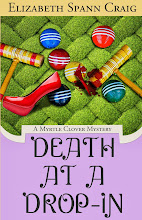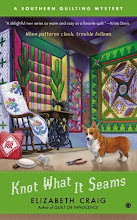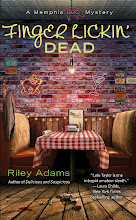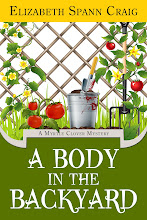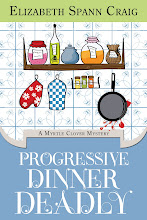 I belong to a group that gathers several times a year. The group is filled with moms like me.
I belong to a group that gathers several times a year. The group is filled with moms like me.During these gatherings, everyone works very hard to be very pleasant. They’re friendly and seem to work very hard to fit in with the other moms there.
Unfortunately, for someone like me (and my horrid memory), this makes it very difficult to remember who’s who. I decided to keep a secret notebook that I refer to before going to the next event. After each event, I sit in the car, list all the names I remember, and jot down descriptive notes after each name. I do like to remember names and use them when I'm speaking with someone, so I have to work hard at it.
My husband came across my notebook and glanced through it. “You are so dead if this ever comes to light,” he chortled.
That’s because I had to resort to describing their various physical traits to tell them apart. They all act so mom-like that I couldn’t find any other distinguishing characteristics. If they had jobs, they didn’t mention them. I certainly never mentioned my writing, so who knows? Maybe they had secret notebooks mentioning a tall woman with long, straight hair who didn't talk much. We never seem to get below that superficial small talk to show who we really were.
Obviously, this isn’t what we want in our stories. We want our characters’ personalities to be different enough so we don’t need the physical crutch as much. Or, we might still need the crutch, but not as much.
Other ways of making our characters stand out from each other:
Diction. Word choice is one way to help a character stand out in dialogue. Mystery writer Margot Kinberg had a great post on character catch-phrases in her post, She’s Got a Way of Talkin’. It also could be how they say what they say. Some characters might be very precise. Some characters might be impatient with others and the impatience comes through.
Mannerisms. Biting nails, slouching, fond of hand gestures, etc.
Quirks.
Hobbies, interests, jobs.
Gifts/skills.
Their motives. What do they want? What’s important to them? How does this impact the story?
And yes, a distinguishing physical trait. Looks do play into distinctive characters. Dimples, moustache, bald head.
You can show a character’s distinguishing characteristics through his actions, his reactions to events, through dialogue (either by what he’s saying or by what others are saying about him), by his manner…and even by his name.
What are your favorite ways to help readers tell your characters apart?
 Image: MorgueFile by ManicMorFF
Image: MorgueFile by ManicMorFFKnot What it Seams, book two of the Southern quilting mysteries, released Tuesday, February 5.
Available in mass-market paperback and digital versions.





